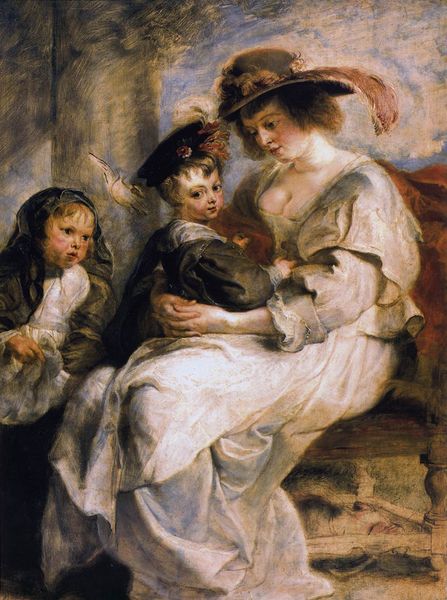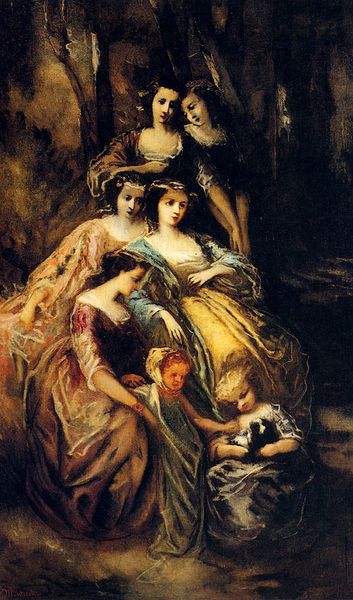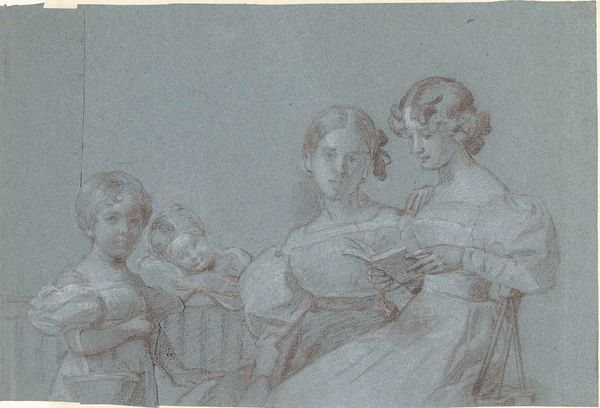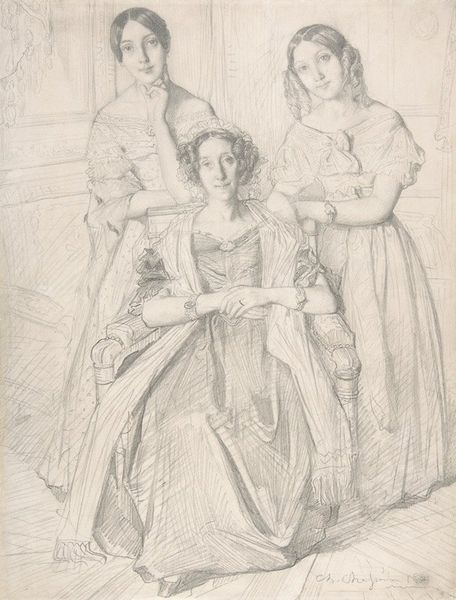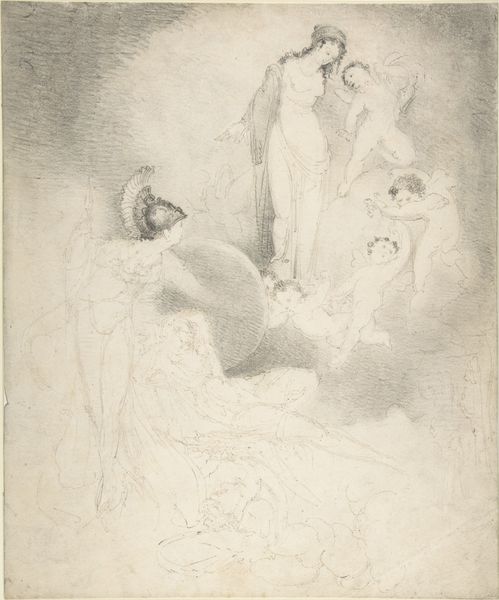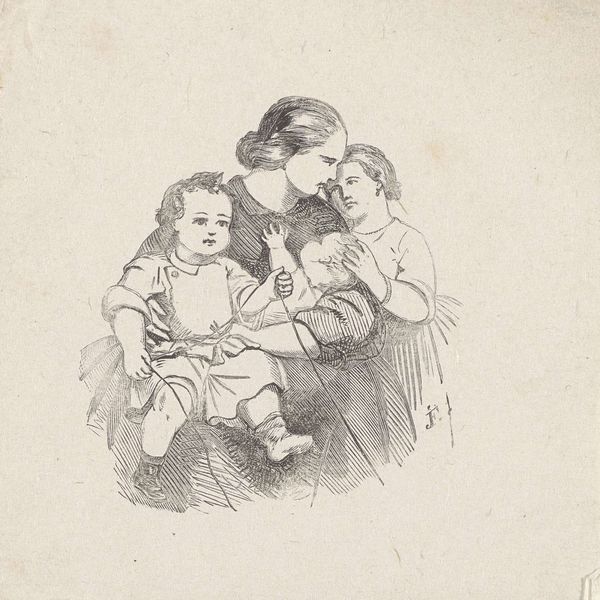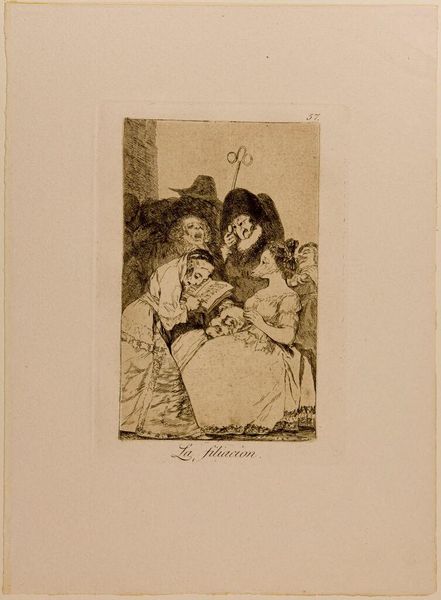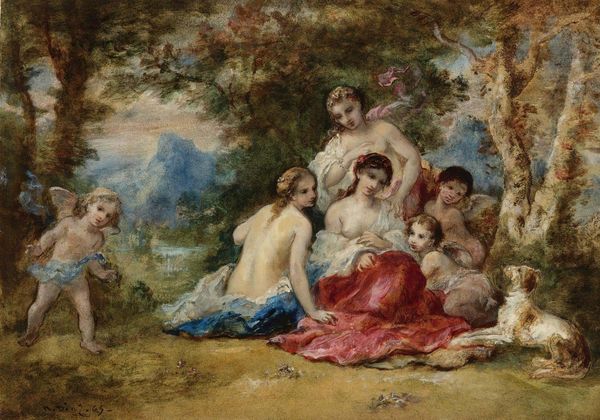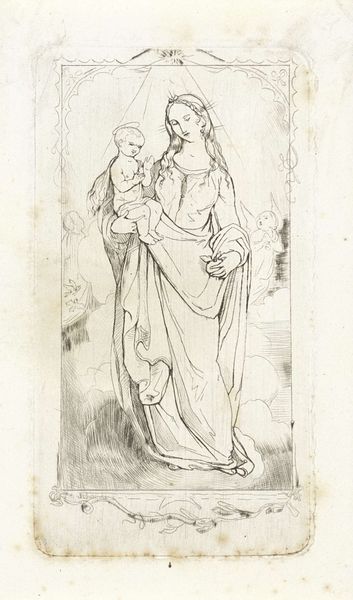
A Girl and Two Women, Standing and Holding a Baby (Study for 'The Covenanters' Baptism')
0:00
0:00
drawing, paper, watercolor
#
portrait
#
drawing
#
acrylic
#
charcoal drawing
#
paper
#
oil painting
#
watercolor
#
genre-painting
#
academic-art
#
watercolor
Copyright: Public domain
Editor: So, here we have George Harvey's "A Girl and Two Women, Standing and Holding a Baby (Study for 'The Covenanters' Baptism')". It's a drawing, possibly watercolor and charcoal on paper, showing a group of women and a baby. What strikes me is the unfinished quality – you can see the sketch lines underneath. What can you tell me about this artwork? Curator: What’s compelling here is precisely that glimpse into the labor behind the image. We see not just the finished representation, but the physical act of its making. The visible sketch lines emphasize the process and the materials. The "Study" element foregrounds materiality, the physical support on which watercolor and charcoal interact. How might the use of inexpensive paper reflect the role or the purpose this image served at that moment? Editor: That's interesting, because the drawing feels more intimate than a finished painting. Almost like a behind-the-scenes look at Harvey’s working methods. I suppose that cheap materials made experimenting and exploring compositions like this much more accessible. It almost demystifies the creative process a little bit, doesn't it? Curator: Precisely! We should question the hierarchy between 'sketch' and 'finished work' itself. Who benefits from upholding that separation, from valuing a polished illusion over visible labour? In looking at works such as this one, we can explore art as the product of work done under specific historical conditions rather than seeing this art as the outcome of genius alone. How was academic art's system of training complicit in that hierarchy, and what material benefits did this hierarchical vision create? Editor: That gives me a new way to consider artworks. I was focusing on the people depicted in it, but the materials and production process reveal so much more about its purpose and cultural context. Thanks, that’s really insightful. Curator: Indeed. Looking at the material conditions of art production allows us to grasp who the artist worked with, what their aspirations were, and perhaps most importantly, how artwork contributes to specific economic and ideological power relations.
Comments
No comments
Be the first to comment and join the conversation on the ultimate creative platform.
